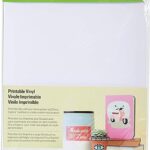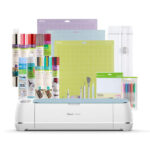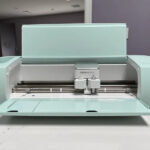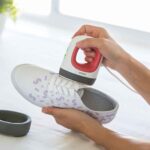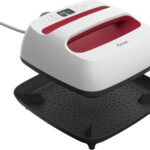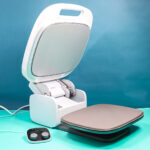As a passionate crafter, you know how crucial a sticky Cricut mat is for your projects. The adhesive surface helps keep your materials firmly in place during cutting, ensuring precise and accurate results. However, after frequent use and exposure to dust and debris, the mat's stickiness can wear off, leaving you frustrated and wondering how to revive it. Before you consider buying a new mat, take heart! In this comprehensive guide, we will explore various methods and techniques to make your Cricut mat sticky again, allowing you to continue crafting without interruption.
Understanding the Cricut Mat Adhesive
Cricut cutting mats come with a light adhesive coating that provides the necessary grip to hold different materials in place while cutting. This adhesive strength can vary between different Cricut mat types, such as the StandardGrip, LightGrip, StrongGrip, and FabricGrip mats, each designed to accommodate specific materials.
With regular use, the adhesive on the mat can accumulate debris and fibers, leading to a loss of stickiness. When the mat loses its grip, it can result in materials shifting during cutting, causing inaccuracies and ruining your project.
Before You Begin
Before attempting to make your Cricut mat sticky again, consider the following:
- Assess the Mat: Examine your mat to determine the level of stickiness loss. If the mat is excessively dirty, consider cleaning it before applying any adhesive treatment.
- Test on Scrap Material: It's always a good idea to test any adhesive treatment on a small piece of scrap material similar to what you intend to cut. This way, you can ensure that the method does not damage your project material.
- Replacement Mat: If your Cricut mat is significantly damaged or the stickiness cannot be restored, it may be time to invest in a new one.
Cleaning Your Cricut Mat
Before trying to make your mat sticky again, it's essential to clean it thoroughly. Cleaning the mat helps remove debris and residue, which might be contributing to the loss of stickiness. Here's how you can clean your Cricut mat:
- Gently Peel Off Residue: Carefully peel off any remaining scraps or material residue from the mat's surface. You can use a scraper tool or your fingers for this.
- Wash with Mild Soap and Water: Fill a sink or basin with warm water and add a few drops of mild dish soap. Gently submerge the mat in the water and let it soak for a few minutes. Use a soft sponge or cloth to wipe away any remaining debris and stains.
- Rinse and Dry: Rinse the mat thoroughly with clean water to remove any soap residue. Shake off excess water and blot the mat with a clean towel to dry. Avoid using a heat source or direct sunlight to speed up drying, as it can damage the adhesive.
Restoring Stickiness with Household Items
If cleaning alone doesn't fully restore your Cricut mat's stickiness, several household items and DIY solutions can help revive it. Let's explore these methods:
1. Painter's Tape
Painter's tape is a quick and easy solution to restore stickiness to your Cricut mat. Follow these steps:
- Clean the Mat: Make sure your mat is clean and dry before applying painter's tape.
- Apply the Tape: Lay strips of painter's tape across the mat's surface, covering it entirely. Press the tape down firmly to ensure good adhesion.
- Remove the Tape: Peel off the painter's tape from the mat. As you remove the tape, it will lift away debris and dust, leaving the mat sticky again.
2. Adhesive Spray
Crafters often use adhesive sprays to temporarily secure materials to cutting mats. However, these sprays can also be used to restore a Cricut mat's stickiness.
- Work in a Well-Ventilated Area: Before using an adhesive spray, make sure you're in a well-ventilated space or preferably outdoors.
- Clean the Mat: As always, start with a clean and dry mat.
- Apply Adhesive Spray: Spray a light, even coat of adhesive spray across the mat's surface. Be sure to follow the manufacturer's instructions for the specific product you're using.
- Let it Dry: Allow the adhesive spray to dry completely before using the mat again. The drying time can vary depending on the product and environmental conditions.
- Restoring Stickiness: Once dry, the mat should be sticky again and ready for use.
3. Heat Transfer Vinyl (HTV) Residue
If you frequently work with heat transfer vinyl (HTV), you might have noticed that the backing paper leaves behind residue on the mat, reducing its stickiness. Here's how you can address this issue:
- Prepare a Scrap HTV Piece: Take a piece of heat transfer vinyl (HTV) with its backing paper still attached.
- Apply HTV to the Mat: Lay the scrap HTV (with the sticky side down) onto the mat. Gently press and rub it across the surface to pick up any residue left by the backing paper.
- Peel Off HTV: Carefully peel off the HTV from the mat. It should lift away the residue along with it, restoring stickiness.
4. Glue Stick Method
A glue stick can be a simple solution to make your Cricut mat sticky again. Here's what you need to do:
- Clean the Mat: Ensure the mat is clean and free of any debris.
- Apply Glue Stick: Take a standard washable glue stick (clear or white) and rub it across the mat's surface. The glue will act as a temporary adhesive, restoring stickiness.
- Remove Excess Glue: Using a soft cloth or tissue, gently wipe off any excess glue from the mat.
- Allow to Dry: Let the glue dry completely before using the mat again. Once dry, it will provide the necessary grip for your cutting projects.
Commercial Restickable Sprays and Adhesives
Several companies offer restickable sprays and adhesives specifically designed for refreshing cutting mats. These products are formulated to provide a good level of stickiness without damaging your materials. When using commercial restickable sprays or adhesives:
- Follow the Instructions: Always follow the manufacturer's instructions for the specific product you're using. Different sprays may have varying application methods and drying times.
- Test on Scrap Material: As with any adhesive treatment, test the product on a scrap piece of material before applying it to your project.
Regular Maintenance and Care
To extend the lifespan of your Cricut mat and maintain its stickiness, follow these regular maintenance tips:
- Clean Regularly: Clean your mat after each use to remove debris and residue. A lint roller or adhesive remover can be handy for quick cleanups.
- Rotate and Flip: Regularly rotate and flip your mat while cutting to distribute wear and ensure even stickiness.
- Store Properly: Store your mat flat in a clean, dust-free area to prevent debris from accumulating on the adhesive surface.
Closing
Restoring the stickiness of your Cricut mat is a feasible task that can save you time and money while ensuring the longevity of your crafting equipment. Whether you opt for household items like painter's tape and glue sticks, or utilize commercial restickable sprays and adhesives, the key lies in proper cleaning and maintenance.
Regularly cleaning your Cricut mat and storing it correctly will help prolong its stickiness and overall lifespan. When the adhesive starts to wear off, you now have a toolkit of effective methods and techniques at your disposal to bring it back to life. Remember to test any adhesive treatment on a scrap material before applying it to your projects, ensuring the best results without damaging your materials.
With a revived sticky Cricut mat, you can continue to enjoy crafting without interruptions, achieving precise and accurate cuts for all your creative endeavors. Embrace these practical solutions, and your Cricut mat will be ready to serve you well in countless crafting adventures to come. Happy crafting!
To find out more about Cricut, please visit any of the following areas:
- How to use cricut infusible ink
- How to make stickers with cricut
- How to make cricut mat sticky again
- How to iron on cricut vinyl
- How to download fonts to cricut
- How to make stencils with cricut
- How to use a cricut
- What is a cricut machine
- How to cut cardstock on cricut
- How to make cake toppers with cricut
- How to put vinyl on cricut mat
- Why is my cricut not cutting
- How to make shirts with cricut
- How to slice in cricut design space
- How to use svg files with cricut craft room
- Why does my cricut keep disconnecting
- How to load cricut mat
- How to curve text on cricut
- How to curve an image on cricut
- How to use cricut card mat
- How to make coasters with cricut
- Why is my cricut power button red
- Why won’t my cricut connect to my computer
- How to calibrate cricut
- How to make stickers with cricut joy
- How to mirror on cricut
- How to do multiple colors on cricut
- How long does a cricut blade last
- How to emboss with cricut
- How to save cricut design as pdf
- Cricut Hat Press: A Comprehensive Guide on Usage - August 13, 2023
- Unlocking Creativity with the Cricut Joy: A Comprehensive Guide - August 12, 2023
- The Ultimate Guide to the Cricut Maker Bundle - August 11, 2023


